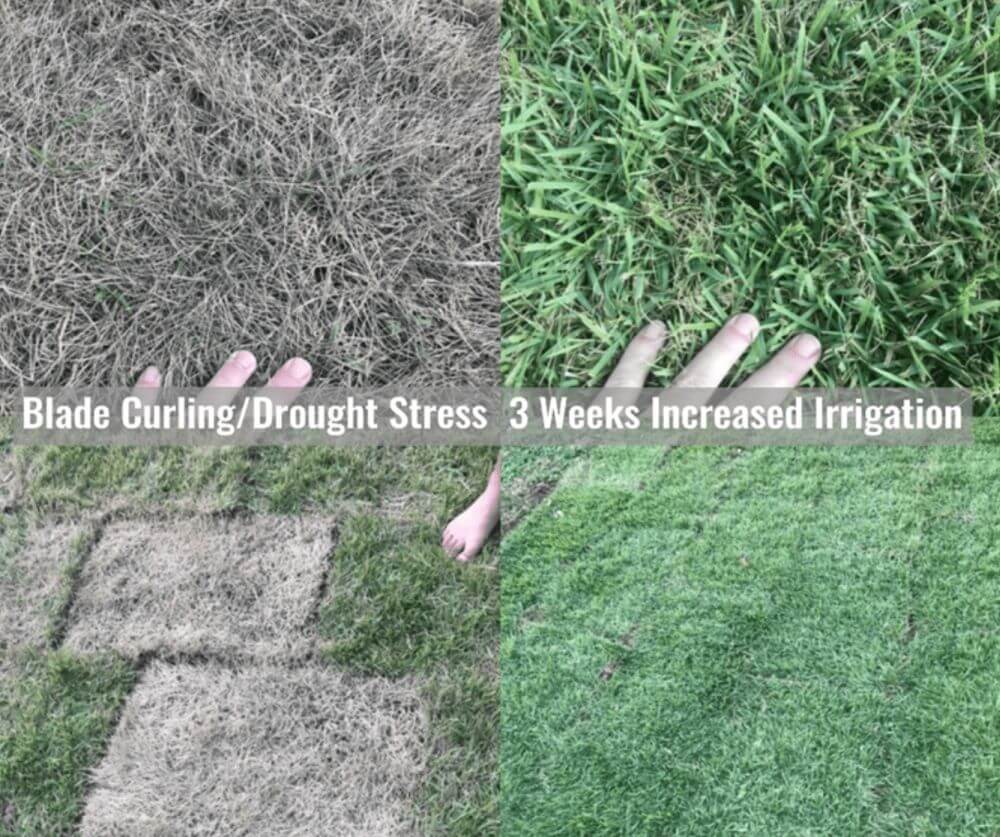Different/Incorrect Variety Part 3

Oftentimes, when various blade-widths are observed, this early sign of drought-stress is mistaken for another grass variety or weeds emerging in newly installed sod. Blade-curling observed after the sod is installed indicates that the grass is not receiving proper irrigation. This is one of the first signs of drought-stress that you should watch for so that you catch the issue before it gets out of hand. Blade-curling is more common in medium to wide-bladed varieties, such as Palisades Zoysia and St. Augustine. Please thoroughly review the irrigation article on our Sod Care page for instructions and tips on irrigating correctly.
Further, the extent/amount of blade curling can vary depending on different factors, such as ambient temperatures, wind speeds, and harvest time. For example, the first pallet harvested will stress more than the last pallet harvested because it will sit on the pallet a little longer.
Depending on soil cultivation depth, soil type/condition, ambient temperatures, weather, and your irrigation schedule, your grass blades should swell to their regular width within a week or two of proper water. If you observe your sod declining versus improving over these first three weeks, please reach out to us as soon as the decline is observed. Please allow at least 2-3 days post-installation for observable signs of improvement.
Common Causes:
- Improper Irrigation
- Irrigation Method (hand watering)
- Ambient Temperatures 80°F & Up
- Delayed Installation
- Improper Installation (gaps, overlapping, etc.)
- Irrigation Malfunction
- Sloping/Water Runoff
- Top Blocks (more exposed to wind & sun)
Resolution:
- Prompt Installation
- Prompt Irrigation
- Proper Irrigation Method
- Proper Irrigation Schedule
- Deep Soil Saturation
Resources:
- Grass Care page
- Instructional video on testing sprinkler efficiency & checking for irrigation malfunctions
- Video on water runoff & the cycle-soak irrigation method


